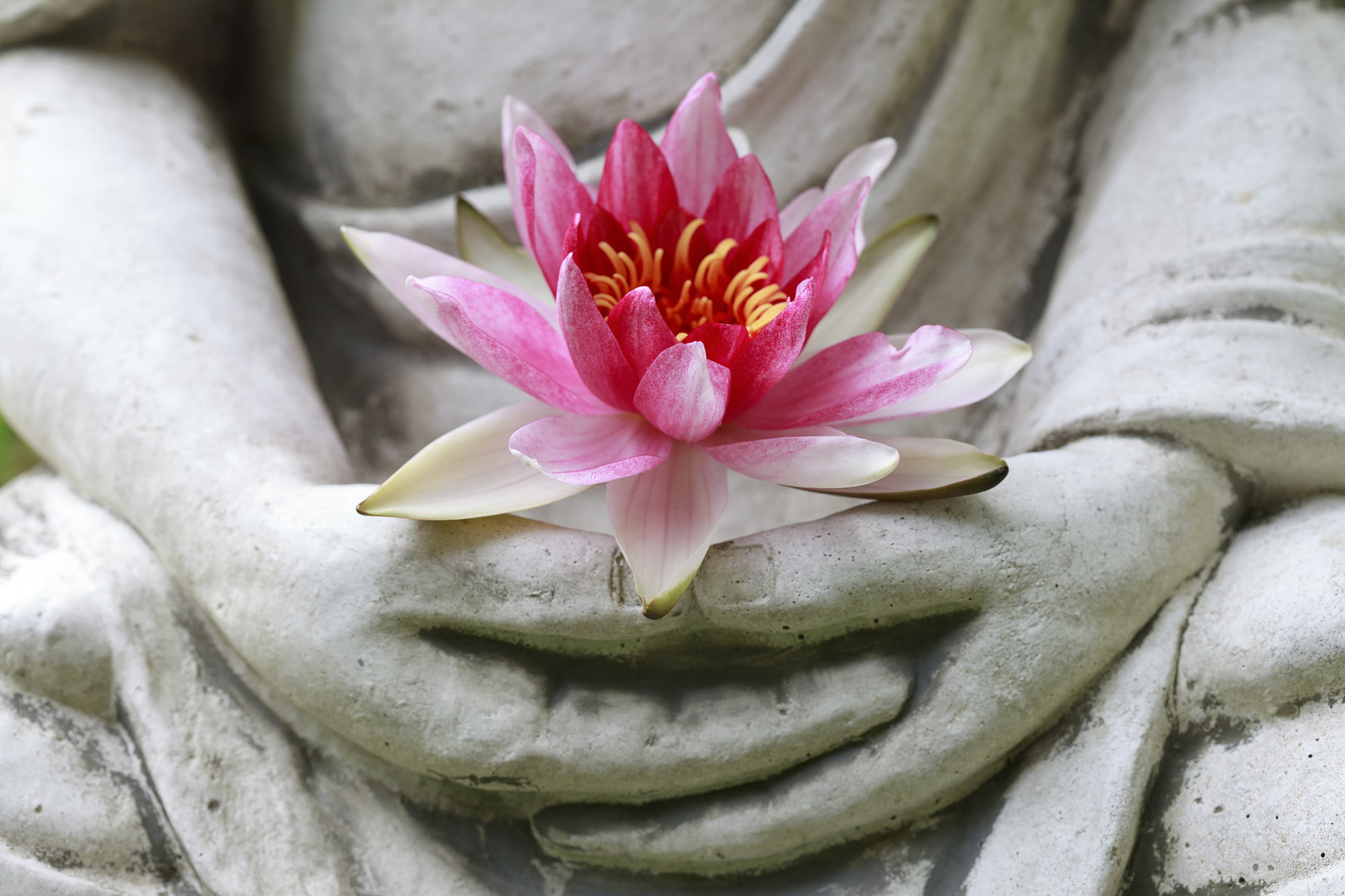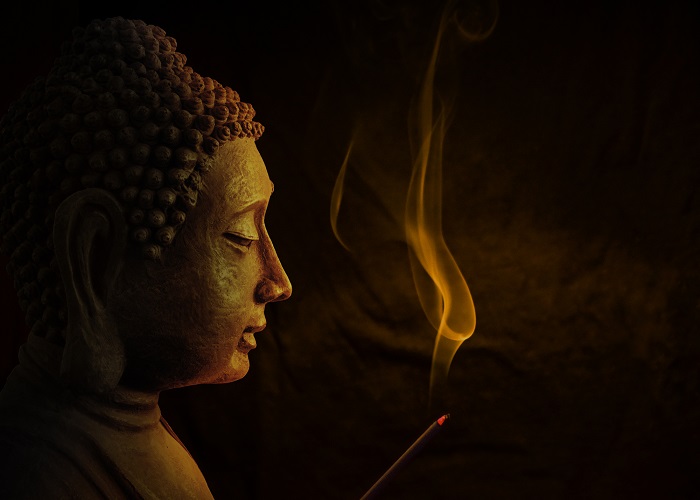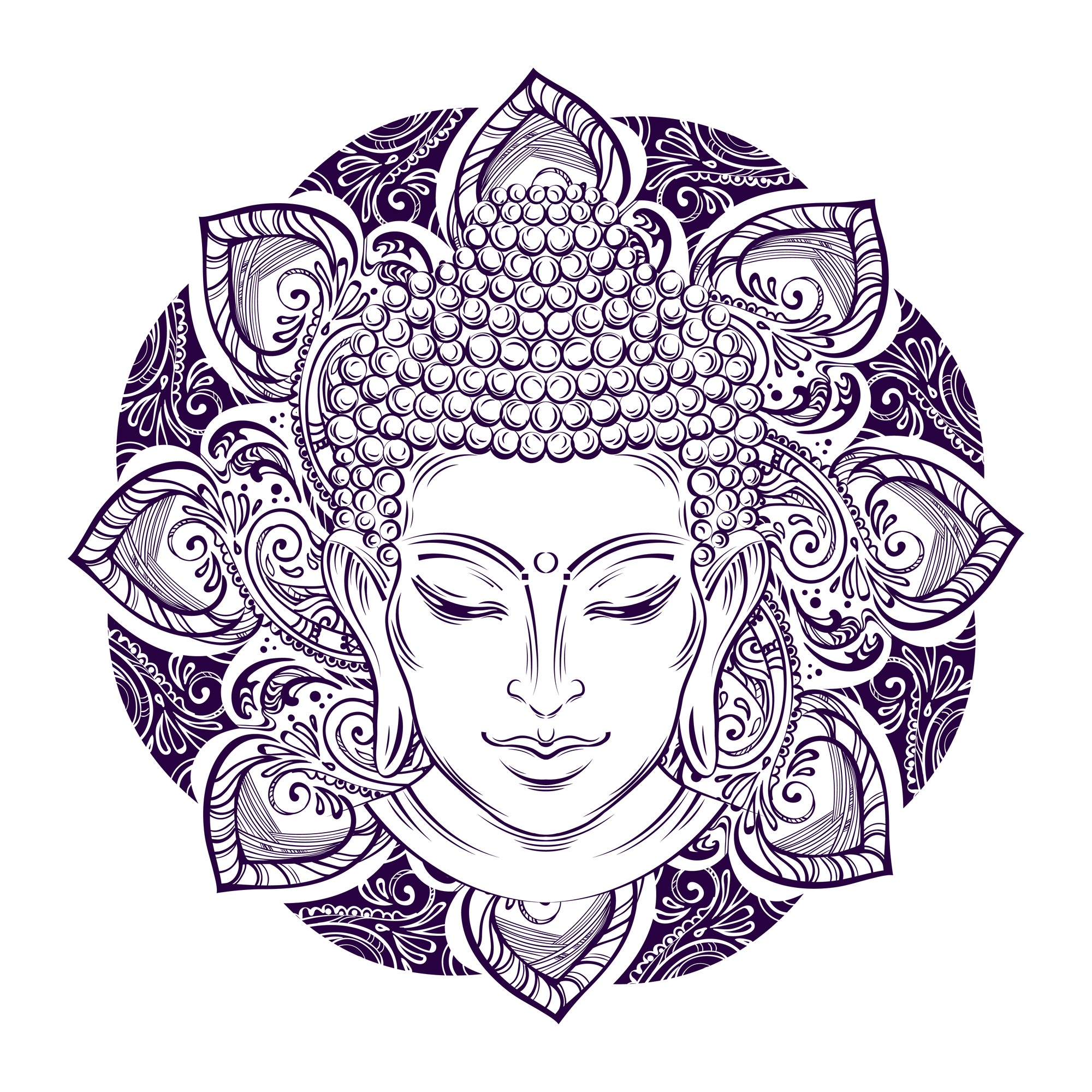If you’ve been searching for meditation advice online, you’ll notice one thing is very consistent: most findings will suggest that as long as you are meditating every day, it doesn’t matter what time you choose to do so.
In truth, however, it does matter.
You might be struggling with meditation because you’ve chosen the wrong time to meditate.
In any realm of practice, making things as easy for yourself as possible is key.
New habits don’t simply manifest themselves out of thin air from desire alone.
They require hard work, determination, and – most importantly – an arsenal of well-heeded knowledge.
By taking the time to consider your ideal time for meditation, you’re more likely to stick with the practice and get the most from it.
What is the best time to meditate?
There are some specific times during the day that are better suited than others.
While they are not strict rules we need to abide by if we want to become advanced meditation practitioners, they are useful pointers for those who are just building up a personal practice.
The best time to meditate will vary according to our unique rhythms, needs, and preferences.
No single being is built the same and so there is no such thing as a single piece of advice that would be effectively suitable for all.
Getting to know your own cycles will help you to determine what makes the most sense for you.
Choosing one of these specific times should be based on what you hope to accomplish from meditation in the first place.
For instance, if you are looking for energy and clarity of mind to direct the flow of your day, a morning practice may be best suited for you.
On the other hand, if you yearn to make the most out of your evenings, you might opt for a post-work practice to help you let go of the day’s demands so that you can settle peacefully into your evening.
Take some time to consider the following options, remembering that consistency is key.
By incorporating meditation into your daily routine, regardless of how many minutes you can set aside for your practice, you will reap the benefits of meditation much sooner than if your practice is scattered.
Here are the 4 best times to meditate and the benefits that they can provide.
#1. Early in the Morning
First thing in the morning is a fantastic time to rest in meditation.
We often think of meditation as a relaxation and stress-reduction exercise and so might overlook the benefits of an early morning practice; however, meditation offers more than mid- and end-of-day ease.
At night, you are most often trying to fall asleep.
With an early morning meditation, you’re literally telling your mind that it is time to be “falling awake.”
Morning meditation helps us to consciously witness and facilitate that awakening process.
Meditation in the early morning also helps you to get your day started on the right note.
Whether you wake up feeling rested and relaxed or ‘off’ in some subtle way, meditation is an opportunity to clear any preconceptions you might have about the day ahead.
Ever notice how oversleeping by just five or ten minutes can throw off your entire day?
By committing to meditation before breakfast, even if you only have a handful of minutes, you grant yourself the opportunity to reset any mental or emotional unalignment that may be present. You come back to your center.
One challenge that morning meditation might pose is that it can be difficult to climb out of bed and begin your practice as soon as your alarm goes off.
So, it is important to find easy ways to meditate in these early hours, especially if you’re only just getting started.
One of the easiest things to do is to just stay in bed.
Don’t attempt to get yourself into the lotus position if it seems out of reach.
Just stay where you are in bed and when you’re fully awake, begin to meditate.
Remember: the best practice is the one you do, so if resting in bed during meditation helps you to commit to your practice, consider this to be your current best opportunity to grow your personal meditation practice.
How long do you have to meditate in the early morning? This depends on the structure of your day.
If you can meditate for 20 minutes, then do so.
If not, there is no need to stress – a shorter meditation is completely acceptable.
This is your practice so it should suit your needs.
Even if you can only spare 5 minutes, use them to meditate. It can make a profound difference in how you see your day.
If you want to commit to 20 minutes each day but can’t fit it comfortably into your schedule all at once, you can also break up your meditation practice into two blocks of 10 minute sessions.
Early morning meditation of ten minutes will get your day started on the right note, while a second 10-minute block in one of the other recommended time frames will help you to rebalance in the midst of your daily activities.
Another advantage of choosing to engage in meditation directly after waking up is the alertness that is often granted directly after rising.
If the body and mind have rested well throughout the night, your practice will benefit from the aliveness flowing back into the body and mind.
There is also a half-sleep state worth observing called ‘hypnagogia’ – a realm in between wakefulness and sleep where a variety of sensory experiences can be observed.
In this ‘in between’ state, you might encounter insightful images, sounds, and other cognitive or physical sensations that are worth looking into more deeply.
As meditation is fundamentally centered around cultivating altered states of consciousness, it is worth investigating where your mind takes you as you transition into the waking world.
If you wish to make a habit of it, try keeping a journal and seeing for yourself what an early morning foray into mindfulness does for the rest of your day.
#2. On Your Lunch Break
Sometimes people have a better experience meditating in the middle of their day.
A lunch meditation session can help you to counter the stress that was experienced during the first part of the day while preparing the mind to be alert and ready for whatever may arise later in the afternoon.
Midday meditations are capable of both resting and resetting both body and mind.
This type of midday practice breaks up the day into manageable sections that naturally create less stress.
Knowing that you have time each day to recharge your energetic batteries (both physical and mental) can help to promote greater peace and ease.
If you have a 60-minute lunch break, grant yourself the time to meditate for 20 minutes, still leaving yourself with 40 minutes to eat and digest.
If you have a 30-minute lunch break, consider a 15- to 20-minute meditation session and use a later mid-afternoon break for your meal.
Your own work schedule and requirements will help to dictate what set-up works best for you; however, regardless of the schedule you are working with, there is typically always enough time to prioritize meditation.
If you are really pressed for time, you might consider committing to even just five or ten minutes of meditation before you grab your lunch.
The benefit of meditating during your lunch break is that the midday practice helps to restore your centeredness, creativity, and energy levels so that you are better equipped to manage (or avoid all together) the fatigue that tends to hit around 3pm.
For shift workers on a different schedule, this late-afternoon slump will likely hit you at a different time of day.
For those who wish to try expanding their practice from a seated, silent, and stationary endeavor, I recommend implementing a walking meditation – something kinetic – where you use your body as the focal point of awareness.
This exercise gives a whole new depth to the mundane rigmarole of everyday tasks and helps to expand our understanding of what it means to meditate.
During the last 60 to 90 minutes of work, it can be very difficult to complete tasks.
Our energy levels are on the low end and our minds are typically elsewhere.
Meditating before this period of fatigue can inspire healthy mental energies to get you through the last hour or two – without the caffeine or unhealthy snacks that serve as temporary fixes for our energy imbalance.
“But I have trouble creating a quiet environment to meditate in at work!”
This is where the benefit of brainwave entrainment products can really shine through.
Put on some headphones and the world will disappear.
Brainwave entrainment also encourages the mind to tune itself to certain frequencies so that specific results can be achieved.
#3. When You First Get Home
Structure is incredibly important for our holistic wellbeing.
We can better manage our time, our thoughts, and our feelings when we have the right daily structure – or boundaries – in place.
For those who struggle to keep their personal and professional lives separate from each other, meditating right after getting home can help to provide the structure that is needed to make this happen.
Having a structure for our days requires setting boundaries so that work stays at work and our personal life can be enjoyed to its fullest.
Meditation right when you get home helps to draw the line between these two parts of our lives.
What is the best time for meditation in this circumstance?
Get in the house, grab something to eat or drink if needed, and then give yourself time to create that separation.
For those who only have 10 minutes at the beginning of their day to meditate, another 10-minute meditation session at this time can help you to reconnect with the present moment and to the peace and quiet that is inherent in this restful time of day.
A common struggle you might come up against when meditating at this time of the day is the racing mind.
After work, the mind is often still quite entangled with the professional responsibilities demanded of it throughout the day.
At this time, it can be difficult to get the mind to become still, so I invite you to try a more mindful approach.
Acknowledge the thoughts and emotions that pass through you – without judgment and without wishing they were not there.
Arguing with your direct experience will not move you closer towards peace.
As you witness whatever mental entanglements are still there, simply bless them with compassion and return to your breath or whatever other focal point is easiest for you to connect with.
Be unconditionally present in these moments of mental meandering, opening yourself to the perfect stillness that rests beneath.
Remember that while doing this there is nothing you need to be aiming for.
Instead of striving, you are decompressing.
Instead of attaining, you are releasing.
Allow the stresses of the day to evaporate from your being as you prepare for what it means to actually be ‘home.’
Can you acknowledge the home both within and around you?
#4. The Moment You Encounter High Stress Levels
Meditation is a good proactive method of handling stress, but it can be an excellent reactive method as well.
If you are feeling completely stressed out and you’re ready to snap, use meditation as a healthy and effective coping mechanism.
Take a walk and still the mind.
Find a quiet corner and focus on a single point.
Close your eyes and take five slow and steady breaths.
Make a conscious choice to do something of the various ways to meditate that exist and you’ll free yourself from the traps of daily stressors.
It can take time to focus the mind when stress is very much present, so be patient with and compassionate towards yourself as you explore these practices.
What is unique about this type of meditation is that you can do it at any time of day for any length of time.
It can be less formal than a traditional 20-minute sit.
If you need two minutes to compose yourself, try a “mini meditation” during that time.
The effects will accumulate, especially if you’re regularly meditating for 15 to 20 minutes somewhere else during the day.
Over time, you will become more adept at finding greater peace amidst whatever life throws at you.
A good piece of advice comes from Jack Kornfield, one of the most predominant meditation instructors currently teaching in the Western world. He suggests: instead of going for a marathon session of meditation, start meditating for no more than 30 seconds – and make sure you stop yourself after that thirty. The trick is to keep you wanting more to thoroughly instill a genuine desire for practice. Rather than meditation being yet another task you have to do – one stroke on a laundry list ending in oblivion – your personal practice becomes something you authentically yearn for.
So, how can you begin a mini-meditation?
A few moments with eyes closed, where all you focus on is your breathing, is the easiest way to start.
While a quiet environment is helpful as it makes for less distraction, it is not necessary that you be in this type of setting for your mini-meditation.
If sounds are unavoidable wherever you are, allow them to flow into and out of your being without judgment, continually refocusing your attention on the breath.
This type of meditation is so powerful that it has the potential to relieve headaches, joint pain, and feelings of fatigue that can creep up on you throughout the day.
Treat these short meditations as mini-resets to bring you back to your highest potential for peaceful alertness.
What is the best time for meditation?
Sometimes it is that one moment during the day that is proving to be your greatest struggle.
Step aside from whatever outer situation is present and draw your attention inwards.
Meditate here for a few moments in stillness and your creative energies will rise to the occasion, helping you to find an inspired solution.
When Should You Avoid Meditating?
The best time for meditation does not usually include right before bedtime.
However, some people do say that meditation before sleep is worthwhile as the mind and brain are very receptive at this time.
If you are able to concentrate fully on your practice and still ease into relaxation directly afterwards, it may be okay for you.
If you wake up in the middle of the night, meditating to get back to sleep is also not recommended. Why?
Because it runs counter to the process of meditation that you’re attempting to establish.
Meditation should be associated with waking the mind up – to stimulate it rather than relax it.
If you get into the habit of falling asleep while meditating, the benefits can be less profound.
Meditation should be reserved for periods where you are able and willing to remain alert.
If you’re struggling to fall asleep at night, consider an alternative to meditation: deep sleep audios such as:
There are numerous brainwave audio programs that can help to induce a deep, relaxing sleep with simple soundwaves, isochronic beats, and musical patterns.
Just 15 minutes of listening to theta waves in these audio tracks can help to calm an anxious and agitated mind and better prepare it to fall asleep.
Here’s What Has Worked for Me
For me, the answer isn’t trying to carve out time in the morning.
At that time of day, I have virtually no time to meditate given my daily responsibilities and personal schedule.
Instead, I set aside time in the afternoon or evening.
I prefer to use brainwave audio for meditating in the afternoon because it helps me to calm down and release whatever stress I may be carrying.
I really love the Brain Evolution System (or Profound Meditation Program 3.0) because after 30 minutes of listening to one of the levels, I’m ready to meditate on my own for another 20 to 30 minutes.
If I need to wait until the evening to meditate, I try to avoid using any audio products to assist with my meditation.
I do, however, try to meditate for a longer period of time in these instances – sometimes up to 60 minutes.
What Will Work for You?
If you’re struggling to find the best time for meditation, try experimenting with the various recommended time frames listed here.
Some people benefit more from multiple mini-meditations throughout the day, while others need an early morning boost or the structure that a late afternoon meditation session can provide.
There is no right or wrong answer here.
Whatever works for you – whatever fits most naturally with your daily schedule – is the best meditation technique for your personal needs and preferences.
You can choose to add brainwave entrainment audio, your favorite music, or even white noise to help you meditate.
Use whatever tools you require to boost your commitment to the practice.
Everyone is different; there isn’t a one-size-fits-all approach to identifying the right time for meditation.
Begin by defining your purpose for meditating.
Once you figure out your purpose, you’ll naturally be guided towards your personal ‘best time’ to meditate.
Remember to avoid using meditation to fall asleep as that may limit the benefits that can be experienced through this powerful practice.
Rather than using meditation as a trick to help you fall asleep, use it for its greatest potential – to inspire and empower your most balanced and meaningful life.
So, what is the best time to meditate? It is the time that works best for you.
What is your favorite time of the day to meditate?






